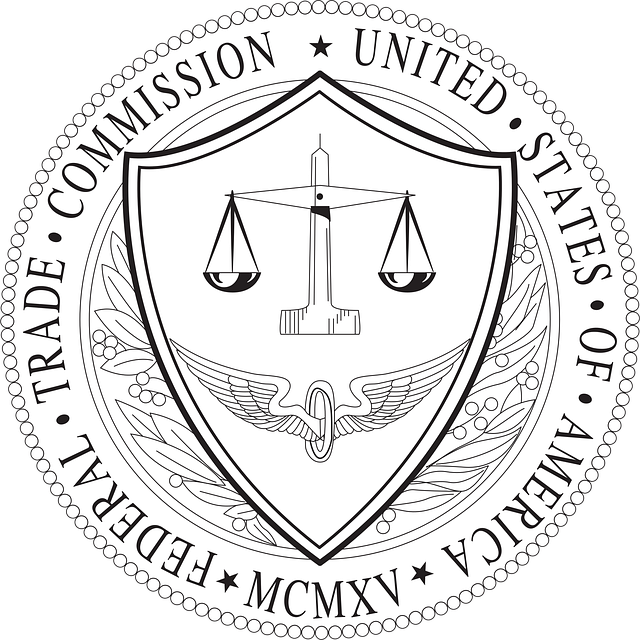Understanding Bybit Futures Commissions and How to Minimize Trading Costs
Author: Jameson Richman Expert
Published On: 2025-09-27
Prepared by Jameson Richman and our team of experts with over a decade of experience in cryptocurrency and digital asset analysis. Learn more about us.
In the rapidly evolving landscape of cryptocurrency trading, comprehending fee structures is as vital as understanding market fundamentals. As one of the leading platforms for derivatives trading, Bybit’s fee model significantly influences your overall profitability and strategic planning. From my extensive experience navigating crypto markets, I’ve learned that not only understanding futures commissions but also employing targeted strategies to minimize these costs can substantially enhance your trading performance. This comprehensive guide delves into the detailed intricacies of Bybit’s futures fee structure, explores the key factors that influence trading costs, and shares proven techniques to reduce expenses. Additionally, I will compare Bybit’s fee approach with other major exchanges, providing insights to help you choose platforms that align with your trading goals and cost-efficiency requirements.

What Are Bybit Futures Commissions?
Futures commissions on Bybit refer to the fees charged for executing derivative contracts—specifically contracts that enable traders to speculate on the future prices of cryptocurrencies, such as Bitcoin, Ethereum, and various altcoins. These derivatives allow traders to leverage their positions, amplifying potential gains but also increasing risk. The commissions are calculated as a percentage of the traded volume and are deducted at the point of trade execution or through periodic fee accruals. In addition to commissions, futures trading on Bybit involves other cost components such as funding fees—periodic payments exchanged between long and short positions based on prevailing market interest rates—and rollover or overnight maintenance fees for holding positions beyond a single trading day. Effective fee management is thus essential to maintaining profitability and executing a sustainable trading strategy in this environment.
How Does Bybit Structure Its Futures Commissions?
Bybit employs a **maker-taker fee model**, a standard in crypto derivatives exchanges designed to promote liquidity and market efficiency. Here’s an in-depth look at how this system functions:
- Maker Fees: These are applied when you place limit orders that add liquidity to the order book. Makers are essentially providing liquidity, and in return, they often benefit from lower fees or even fees rebates. Typically, maker fees are around 0.025%, but this can be reduced further via tiered discounts, promotional campaigns, or holding BYBIT tokens. Engaging in market-making activities or participating in liquidity pools can be a strategic way to lower your trading costs over time.
- Taker Fees: These are charged when your order executes immediately against existing orders, thus removing liquidity from the order book. Taker fees are generally higher—approximately 0.075%—but they can be lowered through high-volume trading or participation in promotions. Takers are often active traders looking for quick entries and exits, making fee efficiency crucial for maintaining profitability in rapid trading scenarios.
Beyond these standard rates, Bybit offers tiered fee discounts based on your 30-day trading volume, participation in platform-specific programs, and the holding of native tokens such as BYBIT. For instance, traders with cumulative monthly volumes exceeding certain thresholds can reduce their maker fees to as low as 0.015% and taker fees to 0.045%. These tiers incentivize active trading and higher liquidity provision, aligning trader interests with platform growth. Compared to competitors like Binance Futures or Bitget, Bybit’s flexible tiered structure and periodic promotional offers often provide more accessible options for traders seeking to optimize costs, especially at higher trading volumes.
Factors Influencing Bybit Futures Commissions
Multiple variables dynamically influence the actual trading fees you will encounter on Bybit beyond the base rates, including:
- Trading Volume in the Past 30 Days: Your cumulative trading volume determines your tier level, directly affecting fee rates. Increasing your volume not only reduces per-trade costs but also unlocks access to exclusive discounts, making high-frequency or large-volume trading more profitable.
- Order Type: Limit orders (maker trades) incur lower or sometimes zero fees, incentivizing liquidity provision. Conversely, market orders (taker trades) usually attract higher fees since they execute immediately at current market prices, which is often necessary in fast-moving markets where speed is critical.
- Participation in Promotions and Loyalty Programs: Bybit frequently runs promotional campaigns such as fee rebates, trading competitions, or deposit bonuses. Holding and staking BYBIT tokens can also grant additional discounts, incentivizing platform engagement and loyalty.
- Account Tier and Trading Frequency: Consistent high-volume traders ascend to higher tiers, unlocking significantly reduced fees. Maintaining an active trading profile and reaching volume thresholds are strategic for maximizing fee savings over time.
- Market Conditions and Liquidity: High liquidity environments tend to produce tighter spreads and less slippage, indirectly reducing transaction costs. Conversely, in low liquidity scenarios, increased slippage can inflate trading costs and diminish profitability.
From practical experience, proactively increasing your trading volume, leveraging platform promotions, and holding native tokens can lead to meaningful fee reductions. Regularly monitoring your account tier status and fee reports allows for strategic adjustments, ensuring you capitalize on the most cost-effective trading opportunities.

Strategies to Minimize Futures Trading Fees on Bybit
Drawing from my extensive experience in crypto trading, I recommend several targeted strategies to significantly lower futures commissions on Bybit, thereby improving your overall trading margins:
- Prioritize Limit Orders: Use limit orders whenever feasible. They typically qualify as maker trades, which often carry zero or minimal fees, and can also provide better price execution control compared to market orders.
- Increase Trading Volume to Reach Higher Tiers: Consistently aim for high-volume trading to unlock tiered discounts. Strategic batching of trades, aligning activity with promotional periods, and maintaining steady trading patterns enhance your chances of sustainable fee reductions.
- Hold and Stake BYBIT Tokens: Participate in staking programs or hold native tokens to gain access to exclusive discounts. This not only lowers trading costs but can generate passive income through staking rewards, creating a dual benefit.
- Capitalize on Promotional Campaigns: Stay informed about Bybit’s ongoing promotions, trading contests, and special offers. Many campaigns offer fee rebates, reduced commissions, or other incentives that directly impact your trading profitability.
- Utilize Advanced Trading Features: Features like conditional orders, OCO (One Cancels the Other), and algorithmic trading bots can execute trades more efficiently, reducing slippage and unnecessary costs. Mastering these tools provides a competitive edge in cost management.
- Plan Your Trading Schedule Carefully: Time your trading activity around periods when your fee tiers are most favorable, such as during promotional events or high-volume windows. Consistency in trading volume sustains lower fee brackets over the long term.
- Review and Optimize Fee Reports: Periodically analyze your fee history and trading patterns. Identifying unnecessary costs or inefficient trades allows you to adjust strategies and reduce overall expenses incrementally.
In-depth fee management requires discipline, regular review, and strategic planning. For further insights, I recommend exploring case studies and detailed tips shared in this comprehensive article. Thoughtful fee optimization can dramatically boost your trading margins and long-term profitability.
Comparing Bybit with Other Exchanges
While Bybit offers a competitive fee structure, it’s important to benchmark against other prominent derivatives platforms such as Binance Futures, MEXC, and Bitget. For example, Binance’s tiered fee system can see high-volume traders paying as low as 0.015% for makers and 0.035% for takers—especially when utilizing BNB tokens for fee discounts. MEXC is known for promotional zero or ultra-low fees during special campaigns, making it attractive for cost-conscious traders. Bitget emphasizes competitive rates combined with innovative social trading and copy trading features, which can indirectly reduce trading costs by improving decision-making efficiency.
However, choosing a platform isn’t solely about fees. Factors such as platform stability, security protocols, user interface, customer support quality, and liquidity depth are equally critical. Sometimes, paying slightly higher fees on a more secure and reliable platform yields better long-term returns and peace of mind. For a comprehensive comparison tailored to various trading styles, resources like CryptoTradeSignals provide detailed analyses and reviews.
Final Thoughts
My journey through crypto trading has reinforced that understanding and actively managing futures commissions is vital for maximizing profitability. Cost savings are not solely about finding the lowest fees but also about strategic order placement, platform feature utilization, and engaging in promotional opportunities. Small percentage reductions, when compounded across many trades, can lead to significant gains over time. Staying informed about platform updates, fee updates, and new promotional offers ensures you remain competitive in a fast-changing environment.
Choosing a trading platform that offers a balance of low costs, security, an intuitive user interface, and reliable support is critical. To deepen your knowledge, explore resources like this detailed Bitcoin valuation analysis and this Ripple price prediction. Remember, disciplined and informed trading strategies are your best tools for sustainable success in the unpredictable crypto markets.